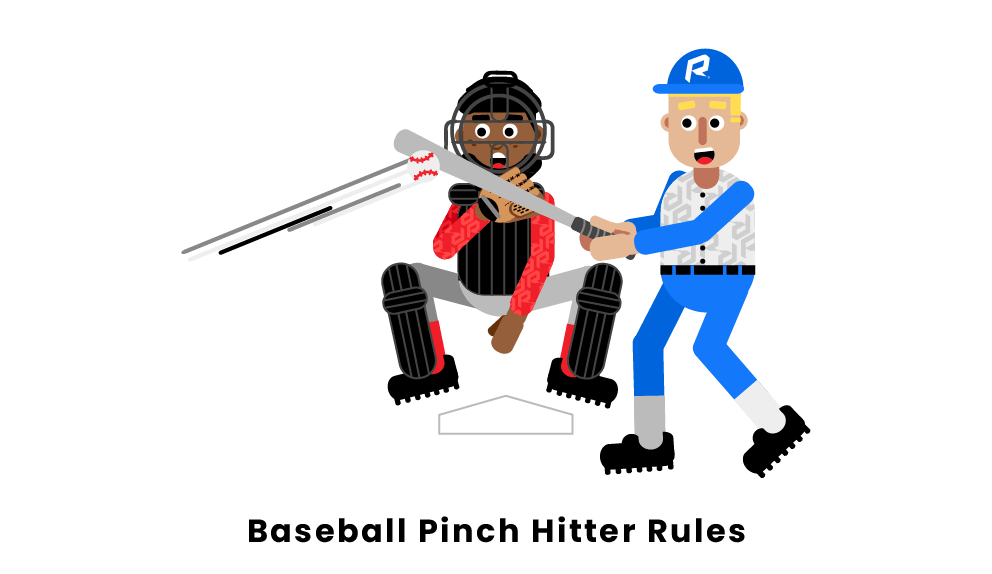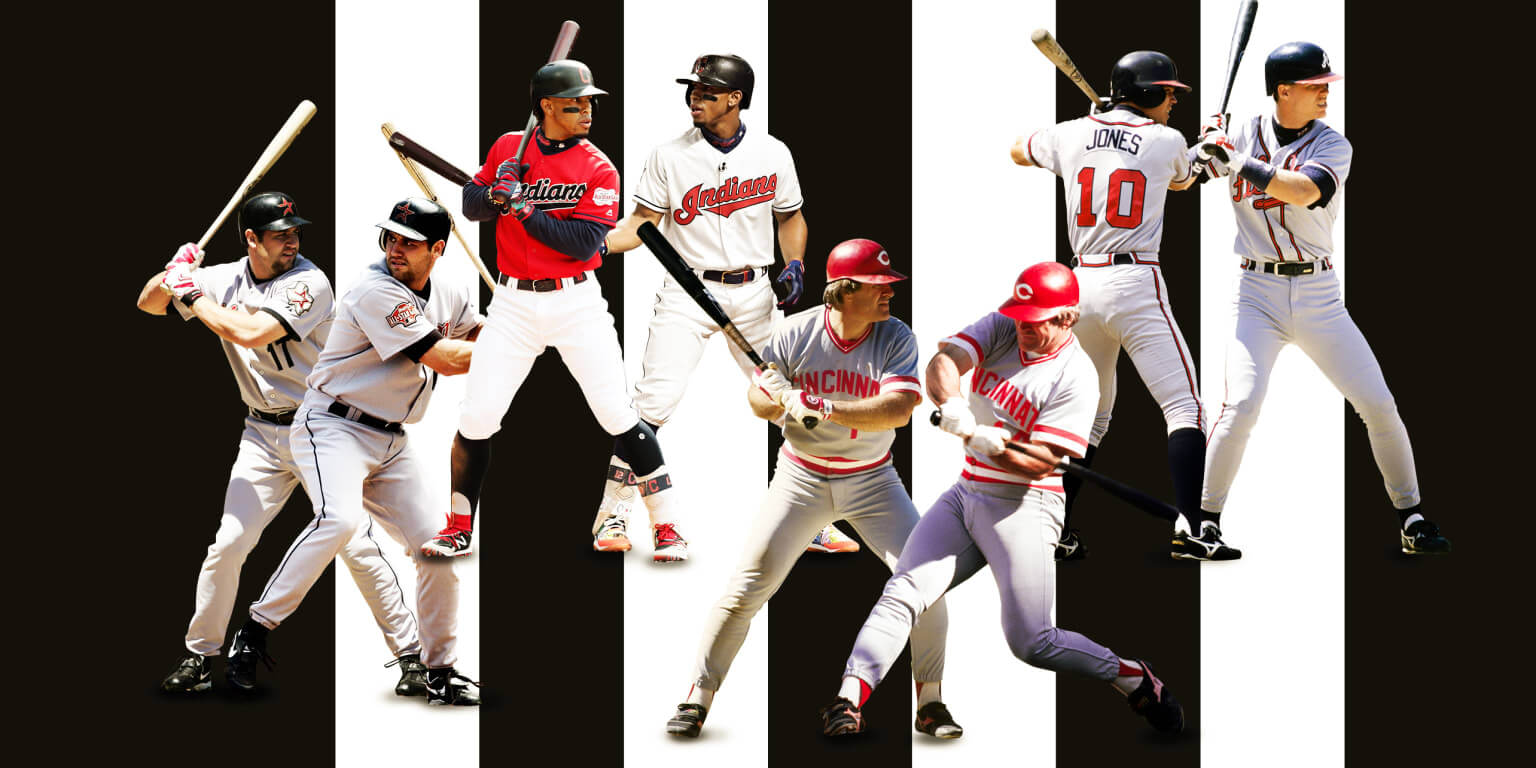In baseball, a pinch hitter is a batter brought in to replace another batter late in a game, usually in a critical situation like having runners in scoring position or needing to advance them. The pinch hitter’s objective is to capitalize on the opportunity and get a clutch hit to drive in runs and give their team the lead.
Unlike a traditional batter in the starting lineup who will have multiple chances to hit in a game, the pinch hitter only gets one shot, usually late in the game when the stakes are high. Their job is to come through in that crucial moment to turn the tide for their team. The manager will call upon the pinch hitter to substitute for another player specifically because they feel that batter gives them the best chance of delivering a game-changing hit when it matters most.
The element of surprise can work in the pinch hitter’s favor since the opposing pitcher will not have faced them before and may not be prepared for their hitting style. However, the pinch hitter also faces extra pressure knowing they likely only get one at-bat to make an impact, with the game potentially riding on their shoulders. Their role is defined by seizing these clutch opportunities. A good pinch hitter relishes the challenge and thrives under pressure.
When Are Pinch Hitters Used?

Pinch hitters are most commonly used in the late innings of close games when a pinch hitter can be sent in for a favorable matchup against the opposing pitcher or to give a starting player a rest. Managers will often save their best pinch hitters on the bench until the final innings when a single hit or home run can make the biggest difference in the outcome.
Late in a close game, managers will assess the game situation and decide whether a pinch hitter gives them the best chance of getting on base or driving in runs. If the pitcher’s spot is coming up in the batting order in a tight game, the manager will often pinch hit to have a better chance of scoring instead of letting the pitcher bat. Similarly, if a left-handed batter has an unfavorable matchup against a left-handed pitcher late in the game, the manager might pinch hit with a righty batter off the bench.
Pinch hitters will also frequently be used to give starters a rest, especially aging veterans or players returning from injury. Rather than have them play all nine innings, a manager can sub in a pinch hitter to give starters a break while still having a productive at-bat late in the game. This allows teams to rest star players periodically while not sacrificing offensive production.
Strategy Behind Pinch Hitters
Managers will often use pinch hitters late in games when they have the platoon advantage against the current pitcher. For example, if the opposing pitcher is left-handed, the manager may send up a right-handed batter to pinch hit, hoping to exploit the platoon advantage. The element of surprise can also come into play, as inserting a fresh hitter that the pitcher hasn’t seen before can potentially throw them off their game.
Some key strategic considerations when using a pinch hitter include:
-
Matchups – Assessing handedness, pitcher tendencies, and career stats to identify favorable matchups. Managers will dig deep into the numbers to gain even a slight edge.
-
Exploiting platoon advantage – Most teams have several lefty and righty bats on the bench for late-game chess matches to gain the platoon split edge. Managers are constantly evaluating who to deploy.
-
Surprising the opposition – Catching the other team off guard with an unexpected pinch hitter forces them to scramble and re-adjust their strategy on the fly. Keeping them guessing can provide a strategic advantage.
-
Changing the complexion of the lineup – A timely pinch hitter can shake things up and bring a different look to the batting order when it’s needed most.
-
Countering defensive changes – If the other team switches pitchers or makes a defensive change, a pinch hitter provides an immediate chance to counter those moves.
-
Sparking a rally – Sometimes a surprise pinch hitter is used to give the team a jolt of energy if they need a spark. An unexpected boost like this can sometimes be the catalyst for a late rally.
The chess match that comes with pinch hitting decisions demonstrates how much strategy is involved for managers trying to gain an upper hand in a close game. Pinch hitters have to be ready at a moment’s notice to stand in against relief aces brought into the game specifically to face them. Executing on the strategic element of surprise is key.
Famous Pinch Hitters

Some of the most prolific pinch hitters in baseball history include Manny Mota, John Vander Wal, Matt Stairs, and Lenny Harris.
Manny Mota played in the major leagues from 1962-1982, most notably for the Los Angeles Dodgers. He set records for career pinch hits (150) and pinch hit runs batted in (RBI) (112). Mota was known for his clutch pinch hitting, batting .315 for his career as a pinch hitter.
John Vander Wal had a long career from 1991-2002, during which he compiled 328 pinch hits, the most ever. He had two seasons with over 50 pinch hit appearances for the Colorado Rockies in 1995 and 1997. Vander Wal was a .247 career hitter but .288 as a pinch hitter. His uncanny pinch hitting skills earned him the nickname “Pinch Hitter Extraordinaire”.
Matt Stairs played 19 seasons in the majors from 1992-2011. He totaled 263 career pinch hits with 23 pinch hit home runs. Stairs’ power hitting off the bench was a weapon many teams utilized. His most famous pinch hit homer came for the Philadelphia Phillies in the 2008 NLCS against the Los Angeles Dodgers.
Lenny Harris owns the record for most career pinch hits with 212 during his 18 MLB seasons. He was the first player to eclipse Manny Mota’s previous career record. Harris was primarily used as a pinch hitter late in his career by Cincinnati and Tampa Bay to boost their benches. He batted .269 overall but an astounding .302 as a pinch hitter.
Notable Pinch Hit Moments

Some of the most memorable moments in baseball history have come from dramatic pinch hit at-bats in the World Series. One of the most famous was Kirk Gibson’s pinch hit walk-off home run for the Los Angeles Dodgers in Game 1 of the 1988 World Series.
Gibson was hobbled by injuries to both legs and could barely walk, but managed to hit a game-winning homer off Oakland’s dominant closer Dennis Eckersley. Another famous pinch hit homer came in the 1975 World Series when Bernie Carbo hit a game-tying three-run homer for the Boston Red Sox in the 8th inning of Game 6. Both of these clutch pinch hit home runs have become iconic World Series moments.
Rules Regarding Pinch Hitters
One of the main rules regarding pinch hitters is that once a player is substituted out of the game for a pinch hitter, that player cannot re-enter the game. This is an important strategic consideration when deciding whether to use a pinch hitter. Managers must weigh the immediate offensive benefit of the pinch hitter against losing the substituted player for the remainder of the game.
Another common strategic move involving pinch hitters is the double switch. This occurs when a manager makes two simultaneous substitutions – replacing the current pitcher with a new pitcher and replacing the spot in the batting order of the outgoing pitcher with a pinch hitter. The primary benefit of the double switch is that it allows the new pitcher to stay in the game longer by moving down in the batting order. It also introduces a pinch hitter into the lineup. Executing a double switch properly requires strategic planning by the manager.
The rules limit how often a team can use pinch hitters in a game. MLB teams are allowed unlimited pinch hitters per game, as long as they still follow the other substitution rules. However, managers must be judicious in using up their bench since they may need to save players for defensive substitutions late in the game. Overall, understanding the pinch hitting rules is key for managers trying to maximize their lineup flexibility.
Role of Pinch Hitters Today
Pinch hitters were once a pivotal strategic role on baseball teams, but they are less common today (Pinch hitter). With larger roster sizes and more specialization of relief pitching, the importance of the pinch hitter has declined. Teams today carry fewer players who specialize solely in pinch hitting.
Analytics now play a bigger role in determining optimal batter-pitcher matchups, reducing some of the on-the-fly decision making about when to use a pinch hitter. Managers will often look to data about batter tendencies and pitcher weaknesses when debating whether to sub in a pinch hitter.
Most pinch hitters today fill out the 12th or 13th spot on the roster. They provide versatility off the bench, with the ability to deliver a timely hit or strategic substitution late in games. However, true pinch hit specialists who excel solely in that role are rare compared to the past. The evolution of modern bullpen roles and bench flexibility has made the dedicated pinch hitter more of a relic.
Famous Pinch Hitting Coaches

Some of the best pinch hitters in baseball history have gone on to become highly sought-after pinch hitting coaches. Their expertise and first-hand experience in coming off the bench cold and delivering in high-pressure pinch hitting situations makes them invaluable assets to teams looking to improve their pinch hitting prowess.
One famous pinch hitting coach is Mike Easler. Easler played 14 seasons in the majors from 1973 to 1987, pinch hitting over 150 times in his career. Known for his clutch bat off the bench, Easler batted .313 overall as a pinch hitter. After retiring as a player, Easler served as hitting coach for the Milwaukee Brewers, Boston Red Sox, and New York Yankees. He mentored players on maintaining their timing and focus to excel when called upon as pinch hitters.
Another renowned pinch hitting coach is Wally Joyner. Joyner accumulated 140 career pinch hits over 16 MLB seasons. The former first baseman has a career .294 batting average in the pinch hitter role. As a hitting coach for the San Diego Padres and Philadelphia Phillies, Joyner has shared his expertise on tracking pitches from the dugout, staying mentally engaged, and embracing rather than fearing the pinch hitting duty.
Finally, Chili Davis was a switch-hitting pinch hitting star who notched 150 pinch hits in his 19 years in the majors. Davis batted .284 overall as a pinch hitter, using his experience and preparation to come through when called upon. As hitting coach for the Oakland Athletics, New York Yankees, and Boston Red Sox, Davis has mentored players on pitch selection, situational hitting, and keeping pinch hitting mechanics sharp. His insights have helped develop strong pinch hitters on playoff contending teams.
The specialized knowledge of accomplished former players like Easler, Joyner, and Davis has helped new generations master the craft of pinch hitting at crucial moments in today’s game. Their wisdom and guidance has elevated modern baseball’s most clutch situational bats off the bench.
Advice For Aspiring Pinch Hitters
Being a successful pinch hitter requires immense mental preparation and situational hitting skills.
Here are some key tips for aspiring pinch hitters:
-
Stay focused on having a quality at-bat. Don’t try to do too much or swing for the fences right away. Look for a pitch to drive and get on base.
-
Remain patient and wait for a pitch in your zone to drive. Be selective and don’t chase pitches out of the zone just because you only have one at-bat.
-
Visualize success before you step in the batter’s box. See yourself having a good at-bat and getting a clutch hit. Positive mental imagery is key.
-
Stay loose physically and mentally while waiting to hit. Get up and stretch, swing a weighted bat, focus on your breathing. Don’t let nerves take over.
-
Study the pitcher and be aware of game situations. Know the pitcher’s tendencies and if there are any base runners to drive in.
-
Adjust your approach based on game circumstances. If down a run late, look for a pitch to drive. If needing a sac fly, get the ball in the air.
Mastering the mental side of pinch hitting is just as important as your swing. Prepare your mind, stay loose, and deliver in clutch situations.
Conclusion
Pinch hitters play a specialized yet critical role in baseball strategy. As we’ve covered, they are substitute batters brought in situations such as when the pitcher is tiring, to face a tough reliever, or to exploit favorable matchups. Though not everyday players, great pinch hitters have turned many games with their late game heroics.
The importance of pinch hitters is their ability to shake up the game when managers need a strategic advantage. Their success relies on being patient, coming through in clutch situations, and catching the opposing team off guard. While not utilized as often today with larger bullpens, pinch hitting remains an intriguing chess match between managers trying to gain an edge.
Some of the most memorable moments in baseball history have come from famous pinch hitters like Manny Mota, Davey Johnson, and Kirk Gibson. Their ability to alter the complexion of a game with one swing highlights the unmatched suspense and strategy that pinch hitters bring to baseball.








